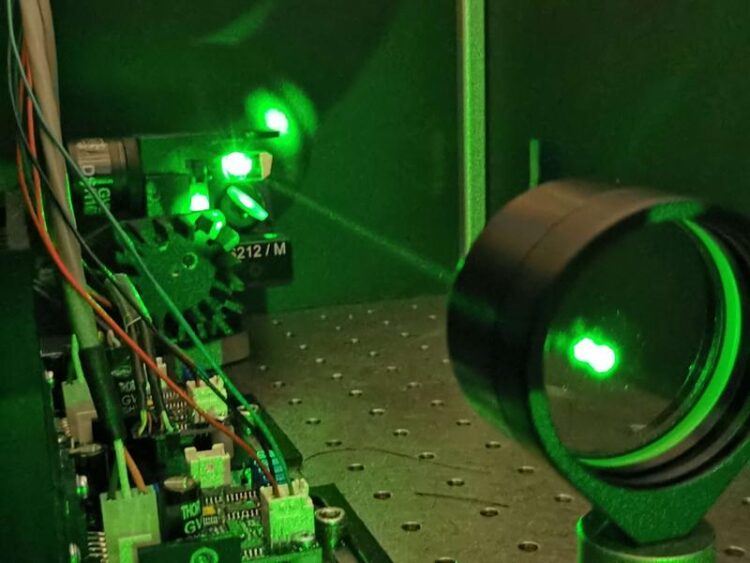Secure, Tap-Proof Communication Enabled by Quantum Technology

Absolutely tap-proof communication and the tap-proof transfer of other data is made possible by a new technology based on quantum mechanics.
(c) Prof Alexander Kubanek, University of Ulm
Secure communication, impervious to interception, is achieved through the application of quantum mechanics in a groundbreaking technology. This method facilitates not only tap-proof communication but also the tamper-proof transfer of diverse data. It seamlessly integrates into existing microchip and processor manufacturing processes, offering a cost-effective solution.
In conventional communication, data is generated and encrypted using mathematical algorithms. However, the vulnerability of this encryption lies in the decryptable nature of the underlying algorithm, as evidenced by numerous global cyberattacks, exposing weaknesses in data security. In contrast, the use of quantum objects for data transfer shifts the focus of data security to the inherent physical properties of these objects.

Proof of a coherent single photon source. (c) Prof Alexander Kubanek, University of Ulm
In a project supported by the Baden-Wuerttemberg Foundation, researchers at the University of Ulm have devised a method to establish communication links utilizing quantum objects. The technique, developed by Prof. Dr. Alexander Kubanek’s team, employs two identical defect centers within nanodiamonds as building blocks for quantum mechanical entanglement, forming the foundation for a quantum data network.
This approach leverages the unique characteristics of as-yet-undiscovered quantum states, which resist copying or measurement without disruption. Quantum state disturbances are readily identified as transmission errors, thwarting potential eavesdropping attacks.
In the process of quantum entanglement, individual photons – particles of light – are utilized from the defect centers in nanodiamonds. The maneuverability of these nanoparticles allows the method to be theoretically integrated into existing microchip production processes.
This method developed by Prof Kubanek establishes communication links rooted in the principles of physics rather than relying solely on mathematical calculations for security. The current objective is to advance this tamper-proof technology towards market readiness through a startup initiative.
A patent application has been submitted for the invention (PCT/EP2023/064304 pending). The Technologie-Lizenz-Büro (TLB) GmbH actively supports the researchers and the Baden-Wuerttemberg Foundation in patenting, strategic intellectual property planning, and marketing ongoing developments.
TLB has been entrusted with the commercialization of this pioneering technology, seeking investors for the continued development of tamper-proof communication technology until it reaches the market-ready stage.
For additional information, please contact: Innovation Manager Dr. habil. Hans-Jürgen Eisler (eisler@tlb.de)
Contact for scientific information:
Prof. Dr. Alexander Kubanek, E-Mail: alexander.kubanek(at)uni-ulm.de
TLB-Innovationsmanager Dr. habil. Hans-Jürgen Eisler, E-Mail: eisler(at)tlb.de
More information:
https://www.technologie-lizenz-buero.com/presse-news/press-news-article/absolut-…
Media Contact
All latest news from the category: Information Technology
Here you can find a summary of innovations in the fields of information and data processing and up-to-date developments on IT equipment and hardware.
This area covers topics such as IT services, IT architectures, IT management and telecommunications.
Newest articles

NASA: Mystery of life’s handedness deepens
The mystery of why life uses molecules with specific orientations has deepened with a NASA-funded discovery that RNA — a key molecule thought to have potentially held the instructions for…

What are the effects of historic lithium mining on water quality?
Study reveals low levels of common contaminants but high levels of other elements in waters associated with an abandoned lithium mine. Lithium ore and mining waste from a historic lithium…

Quantum-inspired design boosts efficiency of heat-to-electricity conversion
Rice engineers take unconventional route to improving thermophotovoltaic systems. Researchers at Rice University have found a new way to improve a key element of thermophotovoltaic (TPV) systems, which convert heat…



